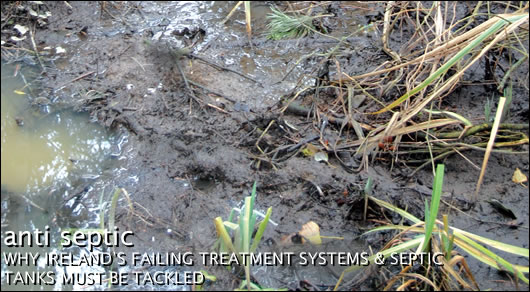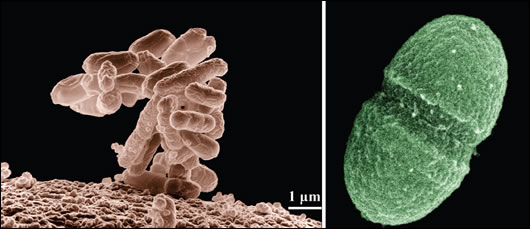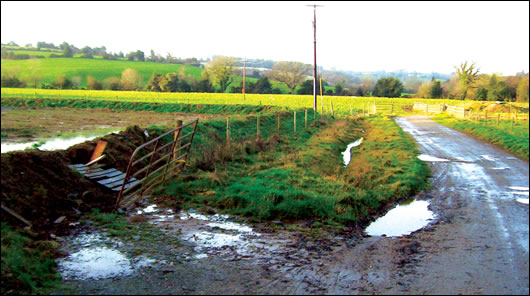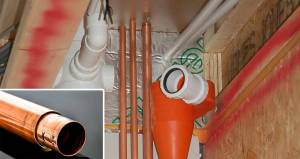- Wastewater
- Posted
Antiseptic

Decades of slack regulation mean that a huge number of Ireland's estimated 450,000 septic tanks and other treatment systems pose a threat to human health and the environment, and the pace of change remains painfully slow. Lenny Antonelli argues that drastic action is needed rectify the situation
I had the misfortune last month of visiting the home of a pleasant elderly couple – a long bungalow in rural Meath hidden by tall bushes and foliage. The back garden was dense with shrubs and trees too, but it was also home to something nastier – a pond of effluent and sludge that obscured a 30 year old septic tank buried beneath. The pond was enclosed by a fence to keep out the couple's dog. As I approached to take pictures the stench became overpowering. I didn't stand there long. Here was a frightening example of our archaic approach to treating wastewater in one-off rural houses: a septic tank for settling solids out of wastewater and an underground pipe to take the liquid effluent to a ditch in the next field. It appeared that when a farmer filled in the ditch the pipes backed-up, causing the effluent to pond. Ireland has an estimated 450,000 (1) on-site wastewater treatment systems (I’ll call them OSWTS from here on) serving one-off houses, including both septic tanks and packaged treatment systems. There is no thorough research on how many are defective, but the anecdotal evidence is disturbing.
A 2002 survey by Cavan County Council indicated that 36% of systems there were defective. (2) Almost a third of private group water schemes are contaminated by Escherichia coli (E. coli), while half contain Enterococci bacteria.(3) Agricultural pollution is partly at fault for this, but so are defective OSWTS. In 2008, the European Commission took a case against Ireland at the European Court of Justice for failing to inspect OSWTS, an issue it had been chasing Ireland over since 2003. The commission warned of "serious shortcomings relating to the poor construction, siting, maintenance and inspection" of OSWTS and the "inactivity" of the relevant authorities. It said septic tanks were causing "serious damage" to the Irish environment, and that legislation had done nothing to fix the problems.
Not surprisingly, the European Court of Justice ruled against Ireland. But will this make a difference, and how did we get into this mess?
Bungalow blitz
While a debate about the merits of one-off housing is legitimate, one thing is clear: if we’re going to build them, they must at least meet basic public health standards. But vigorous defence of the right to build on family land has mushroomed into a belief that building a one-off house should be as cheap and easy as possible - hence the preponderance of cheap and dodgy septic tanks.
The arrival of packaged secondary treatment systems to the Irish market was supposed to end this - packaged systems use biological and mechanical mechanisms to treat wastewater within the “black-box”, rather than relying on the soil for treating liquid effluent as septic tanks do.

Both E.Coli (left) and Enterococci bacteria (right) are common contaminants in private group water schemes
But that wasn't to be. Before I visited the bungalow in Meath, I stopped by a fairly typical one-off rural home on the east coast. A packaged treatment plant had been installed, its lid almost one metre below ground level, with a block-built extension shaft built atop it – safely accessing the plant for inspection and maintenance seemed impossible.
The system had cracked – groundwater could now flow in and effluent flow out. The homeowner was forced to pump untreated sewage across his garden to a boundary ditch via some pipes he stuck together. The garden is now a no-go area for the family’s children. While packaged treatment systems offer more advanced technology than septic tanks, poor regulation has failed to prevent defects just as it has with septic tanks.
Wastewater rules
Regulations governing OSWTS for unsewered dwellings are spread over two documents: Part H of the building regulations and the EPA's Code of Practice for Wastewater Treatment Systems serving single dwellings.
Part H is currently being updated – both the statutory instrument (which outlines legal obligations) and technical guidance document (or TGD, which describes technical means of meeting those obligations) went to public consultation earlier this year. But anyone familiar with building regulations couldn't help but notice that when it comes to wastewater treatment, the TGD contains little technical guidance. Instead it refers readers to the EPA's Code of Practice (CoP) for detailed advice – a strange step: why offer guidance in a legally meaningless code of practice rather than in the TGD, as is done across all other parts of the building regulations?
A draft of the EPA’s CoP was first published in 2000, but the final document only came out last year. In December the Department of the Environment issued a circular to all local authorities advising them to implement the CoP, which many were already doing.
The CoP is a controversial document. Despite being in production for more than a decade, environmental engineers Construct Ireland has spoken to have pointed out errors with diagrams and other guidance in the CoP. And the document appears to give septic tank systems – for which there is no real method of testing the quality of effluent – priority over modern packaged treatment systems, which can be tested.
Perhaps the biggest flaw with the CoP is just how prescriptive it is. By offering detailed technical advice, which is then practically treated as law3 rather than guidance by local authorities (a senior official at Leitrim County Council described the document as “the law of the land” earlier this year), manufacturers and suppliers are denied the flexibility to design systems based on site-specific circumstances.

The ends of the percolation pipes within the flooded percolation area to the left extend into a surface water ditch which runs directly into a small water course about 40m away, resulting in a sewage fungus growth in the stream.
Process, not product
OSWTS cannot be treated like standard construction products. While the same boiler or u roof slate could be used for practically any house in the country, OSWTS rely heavily on the environment itself – principally on the soil to treat and disperse effluent. Soil type, topography, drainage and individual house-keeping practices all affect a system's functioning. A wastewater treatment system is a process, not a product – it must be designed to work based on the site it will be installed on. It is impossible to offer detailed and prescriptive guidance that can include the circumstances of every site, and the design of every system type. The lack of emphasis on the responsibility of designers and suppliers in either Part H or the Code of Practice, combined with the insistence that prescriptive advice is adhered to, leads to what happened in the east coast home I described above: a site assessor or supplier selects a system that satisfies the local authority’s strict interpretation of the CoP with little thought for site-specific conditions; the supplier delivers the system to the site and the builder installs it without much contact with the engineer or site assessor; the system fails. The consumer is left with the financial and environmental consequences, with little or no opportunity for redress.
Rigidly sticking to the Code of Practice could even prevent a homeowner from up-grading a defective system. The CoP requires that septic tanks and other treatment systems be certain minimum distances from features such as streams, drains, lakes, dwellings, trees and roads. This seems sensible, but in reality separation distances can only ever be indicative and may need to be shorter or longer depending on site conditions. Many systems have been installed down the years in smaller gardens or other sites that don't meet the current CoP’s separation distances. If local authorities are strictly following the CoP, a homeowner would have no way of replacing a faulty system on such a site - even though experienced environmental engineers have told Construct Ireland they can design properly functioning systems for such tight spaces.
In an emailed press enquiry to the EPA, Construct Ireland asked whether the Code of Practice was intended as guidance, or to be strictly adhered to. The EPA said that "all new wastewater treatment systems should follow the code of practice".
However, the EPA acknowledged that "in some cases existing on-site domestic wastewater treatment systems may fail to meet the performance requirements as set out in this CoP", but they said that in such cases "variances to the CoP requirements may be considered by the local authority when it is satisfied that the proposed upgrade will provide improved treatment and reduced environmental impact". If the CoP's requirements can't be met on a site, in other words, local authorities can consider bypassing them provided the upgrade will reduce pollution. Whether local authorities are aware of this – or are implementing it – is another question entirely.
What is to be done?
For the last year I have been chairing a Green Party water policy group that has been examining these issues, and I believe there is a way out of this mess (these are strictly my personal views, not those of the Greens or the water policy group). Firstly, there is no point having technical guidance split across multiple documents – for clarity all of it should be in the TGD of the building regulations. The regulations should set down strict performance criteria for parameters such as biochemical oxygen demand and suspended solids – for all OSWTS.
And no matter how detailed the guidance is, qualified designers and engineers must be free to design systems that ignore it based on site-specific circumstances so long as they still meet performance and statutory requirements. Legal and professional responsibility must then be placed firmly on those designers, who should be covered by relevant insurance so homeowners whose systems fail have an opportunity for redress. But even if existing regulations are sorted, what is to be done about the fixing the – presumably – hundreds of thousands of defective existing systems? In response to the European Court of Justice’s judgement against Ireland for failing to inspect OSWTS, Ireland has until the end of the year to propose a solution. Inspecting septic tanks is notoriously difficult though – especially older ones. ‘Out of sight – out of mind’ appears to have been a main design principle for many systems – in some cases just locating the tank could prove challenging. Once liquid effluent leaves the tank, where solids settle out, it relies on a percolation area for treatment – basically an area of soil through which effluent is treated by a mixture of biological activity, diffusion, dispersion and dilution as it drains. But there is no real way to test the quality of effluent leaving the percolation area, and many older sites – such as the one I visited in Meath – have no percolation area at all. One county that already inspects systems – and that was exempted from the European Court of Justice's verdict against Ireland – is Cavan. The county introduced bye-laws in 2004 requiring homeowners with OSWTS to have their systems inspected every seven years. To date about 3,000 of the 11,000 systems in the county have been inspected – a quarter required repairs, such as the introduction of new percolation areas, replacement of soak pits and diversion of grey water from ditches to the treatment system. In a small number of cases almost no form of treatment existed. Regular spot-checks by the council helped to identify unscrupulous assessors who were falsely giving systems the thumbs–up. 2
The lessons from Cavan are important, but the county is characterised by heavy soils and poor percolation, and most fields are surrounded by ditches or drains – problems with OSTWS effluent are likely to be apparent on the surface. Inspection will be much more difficult elsewhere. Which begs the question – if inspecting septic tank systems is so difficult, and there is no proper way to test the quality of their effluent in the field, isn’t it time we stopped using them?
1Sheeran, G, (president of the Irish Planning Institute) 2010. Too many one-off houses?. [Letters to the Editor] (The Irish Times, 9th March 2010).
2In conversation with Peter Cork, senior engineer, Cavan County Council
3The Provision and Quality of Drinking Water in Ireland - A Report for the Years 2007-2008, Environmental Pro-tection Agency, 2009



